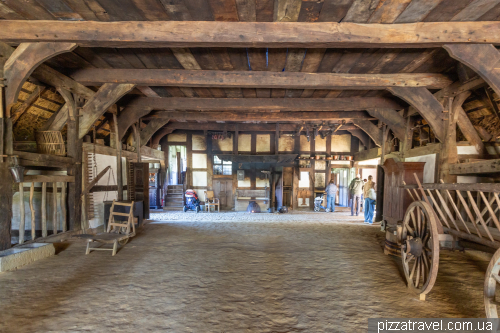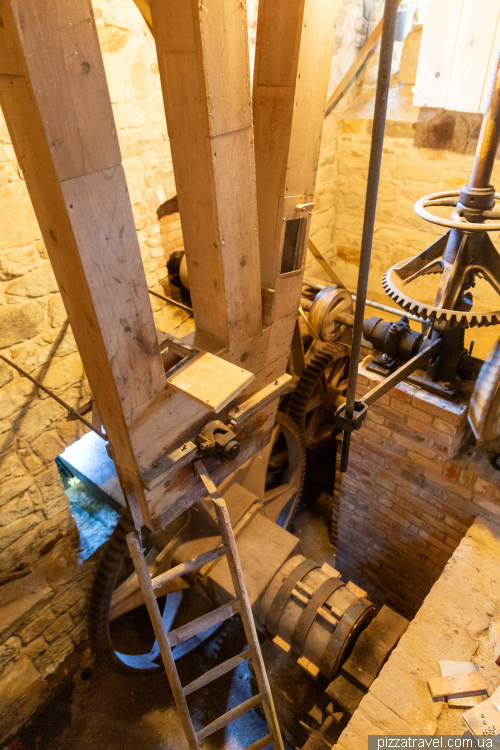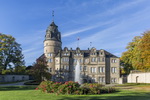The museum was founded in 1971 and covers an area of over 90 hectares. It contains more than 120 original historic buildings, including farmhouses, barns, mills and workshops, which have been moved from various regions of Westphalia and restored to their original state.
The museum is divided into courtyards, each courtyard is dedicated to one of the regions of Westphalia and consists of a central, large house, and associated buildings. It is clearly visible on the map.
The territory is large, we went on foot, but you can travel by horse-drawn carriage.
The most interesting part is the recreated original interiors with furniture, utensils and household items of the respective eras. In most houses they are behind barriers, but in some houses, such as Osnabrück, the interiors are fully accessible to visitors. Our daughter immediately recognized this and touched literally every little detail.
Some of the houses have recreated workshops of traditional crafts such as blacksmithing, weaving and baking. And these are not just exhibits, everything works and you can taste bread from the ancient kitchen.
The houses are interesting, they are called “Einhäuser” or “one-houses”. They are quite large and, most interestingly, people and animals lived in them under the same roof. We had seen a similar house before, in Georgian Svaneti, but it was much smaller there.
I can say that by modern standards, it looks horrible. In some of the houses of the museum live real animals, you can go in and smell the odor. Why did people go to such discomfort, and, judging by the houses, not poor people. There were several reasons.
- It was cheaper to build one big house than two separate buildings - for people and for livestock. Less materials, less work, easier to maintain.
- Animals give off heat, and in cold climates, it was a natural way to heat the living space. There was no centralized heating in those days, and every drop of heat mattered.
- Livestock were valuable possessions. If animals lived near their owners, it was easier to protect them from thieves and wild animals. It also allowed for a quick response if an animal became ill or gave birth.
- Cattle required care several times a day - feeding, milking, etc. If the stall was in one room, it saved time and effort, especially in winter.
There are water mills and air mills on the museum grounds. I think you have seen this in many places, but here they are fully working! You can go inside and see how everything works, all the mechanisms are really spinning.
At the far end of the museum is a whole small settlement with various medieval public, social and cultural buildings.
There's also a restaurant where you can try medieval food, which we did.
For children, one of the houses has a covered playground, marked “Ausstellung” on the map.
The museum is open to the public from spring through fall, usually from April 1, but check the official website or google maps.
Getting there: the main parking lot is 51.925528, 8.870389, but there are not many places there, so many people park in the second parking lot 51.920917, 8.858417 and walk to the main entrance, about 900 meters. From Detmold train station it is a 2300 meter walk, you can visit the town and castle along the way. From the train station you can take buses 701 (Berlebeck), 703 (Hiddesen), 782 (Bad Meinberg) to bus stop Freilichtmuseum.




















































